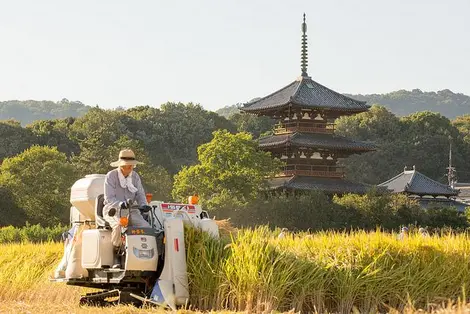Labor Day in Japan 勤労感謝の日
Celebrating hard work
November 23 is a national holiday in Japan when people commemorate labor and give thanks to Japan's workers.
Originally, Labor Day in Japan was a harvest festival, hence the fall celebration. Its origins are found in rituals of the Asuka period (6-7th centuries). From the reign of Empress Kogyoku, the people, back then mainly agricultural workers, thanked the kami (deities of Shinto) for the abundance of rice fields and other products - a bounty that fed the population for a year. The sovereign presided over the ceremony, offering the new rice to the gods before tasting it. This festival, called Niinamesai, lasted until the Second World War.
The American influence
In 1948, three years after the Japanese surrender to the United States, the Supreme Allied Commanders, the US military administration responsible for managing the occupation of the Japan after the war, ended the imperial nature of this festival, as they regarded its Shinto influence with suspicion. They changed "Gratitude to workers Day" (Kinro kansha no hi) into Labor Day as we know it today, a mixture of Thanksgiving and the American Labor Day.
A holiday to say thank you
According to the Japanese Constitution, November 23 is dedicated to "honoring labor, celebrating production", and encourage people to express "mutual gratitude." Work has of course evolved since the sixth century, and it isn't only agricultural and physical labor that is celebrated. All sectors, including the services or research industries, are in the spotlight. Today, November 23 is an opportunity for numerous celebrations at temples and shrines all over the country, to thank those contributing to the prosperity of the country.















